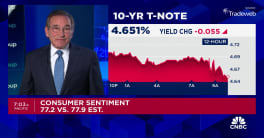Rather than easing back from the January level as expected, existing home sales shot significantly higher in February, The National Association of Realtors® (NAR) said pre-owned single-family houses, townhouses, condominiums, and cooperative apartments sold at a seasonally adjusted annual rate of 4.38 million units. This is an increase of 9.5 percent from the 4.0 million unit pace the previous month and the largest monthly increase since last February. Sales still trailed that month’s 4.53-million-unit rate by 3.3 percent.
Analysts polled by Econoday had a consensus estimate for sales of 3.92 million units while Trading Economics had projected the rate at 3.94 million.
Single-family home sales grew to a seasonally adjusted annual rate of 3.97 million in February, a 10.3 percent gain, but were down 2.7 percent year-over-year. The annual sales rate for condos and coops (410,000 units) was 2.5 percent higher than in January, but 8.9 percent below the February 2023 pace.

Despite the increase in sales, the number of homes available for sale also climbed, rising 5.9 percent from January and 10.3 percent from the previous February to 1,07 million units. This is estimated at a 2.9-month supply at the current rate of sales. Still, inventory remains well below the five-to-six-month supply considered a balanced market.
The median existing home price for all housing types in February was $384,500, an increase of 5.7 percent from $363,600 a year earlier. It was the eighth consecutive month of year-over-year price gains and was the highest price ever recorded for the month of February. The median price for a single-family home was $388,700, a 5.6 percent annual increase while condos appreciated by 6.7 percent to a median of $344,000.
First-time buyers were responsible for 26 percent of the month’s sales and individual investors or second-home buyers accounted for 21 percent. Thirty-three percent of sales were all-cash. Properties typically remained on the market for 38 days in February, up from 36 days in January and 34 days in February 2023.
Sales rose in three of the four major regions compared to January but remained below the pace a year earlier in all four. For the fourth consecutive month, the Northeast posted a sales rate of 480,000 units. This was 7.7 percent below the previous February’s number. The median price in the Northeast was $420,600, an increase of 11.5 percent from one year ago.
“Due to inventory constraints, the Northeast was the regional underperformer in February home sales but the best performer in home prices,” NAR chief economist Lawrence Yun said. “More supply is clearly needed to help stabilize home prices and get more Americans moving to their next residences.”
In the Midwest, existing home sales rose 8.4 percent to an annual rate of 1.03 million, a 3.7 percent deficit year-over-year. The median price moved higher by 6.8 percent to $277,600.
Existing home sales in the South jumped 9.8 percent from January to an annual rate of 2.02 million, down 2.9 percent from one year earlier. The median price in the South was $354,200, up 4.1 percent from last year.
The greatest increase was in the West with a surge of 16.4 percent compared to January. The annual rate of 850,000 units was 1.2 percent below sales the prior year. Prices also surged, rising 9.1 percent to $593,000.
National Association of Home Builders (NAHB) analyst Fan-Yu Kuo, writing in the Eye on Housing blog compared results of NAR’s Pending Home Sales Index (PHSI), a measure of signed purchase contracts thought to be a leading indicator of existing home sales, to recent completed transactions. Kuo said the PHSI fell from 78.1 to 74.3 in January. On a year-over-year basis, pending sales were 8.8 percent lower than a year ago per the NAR data.







